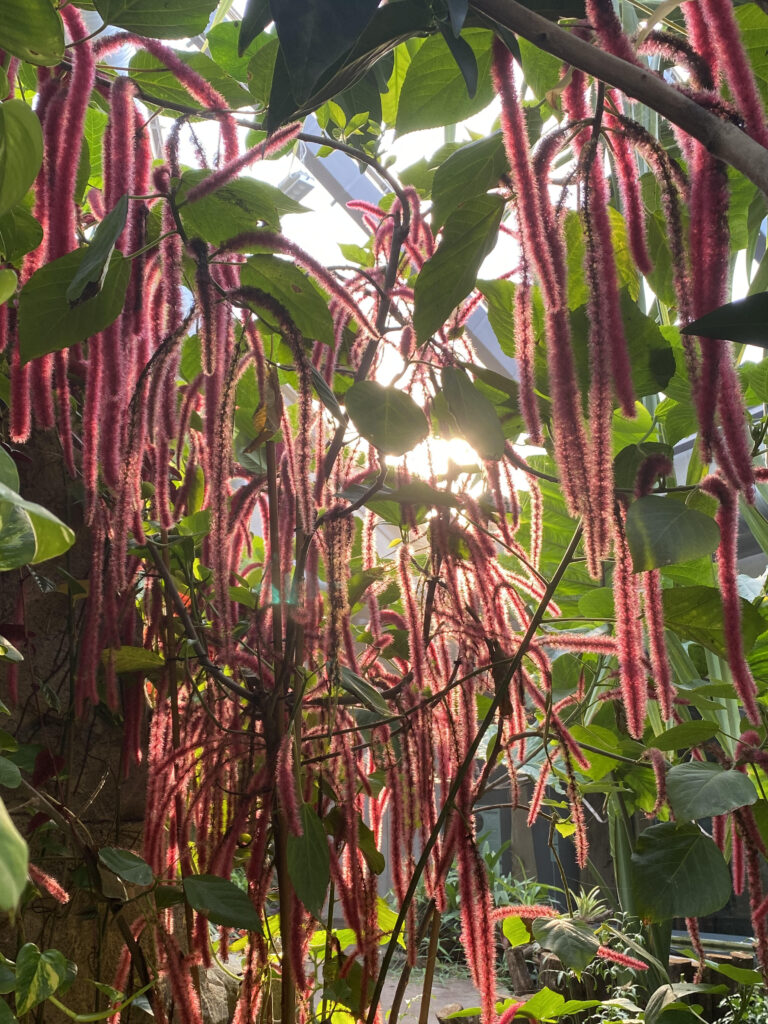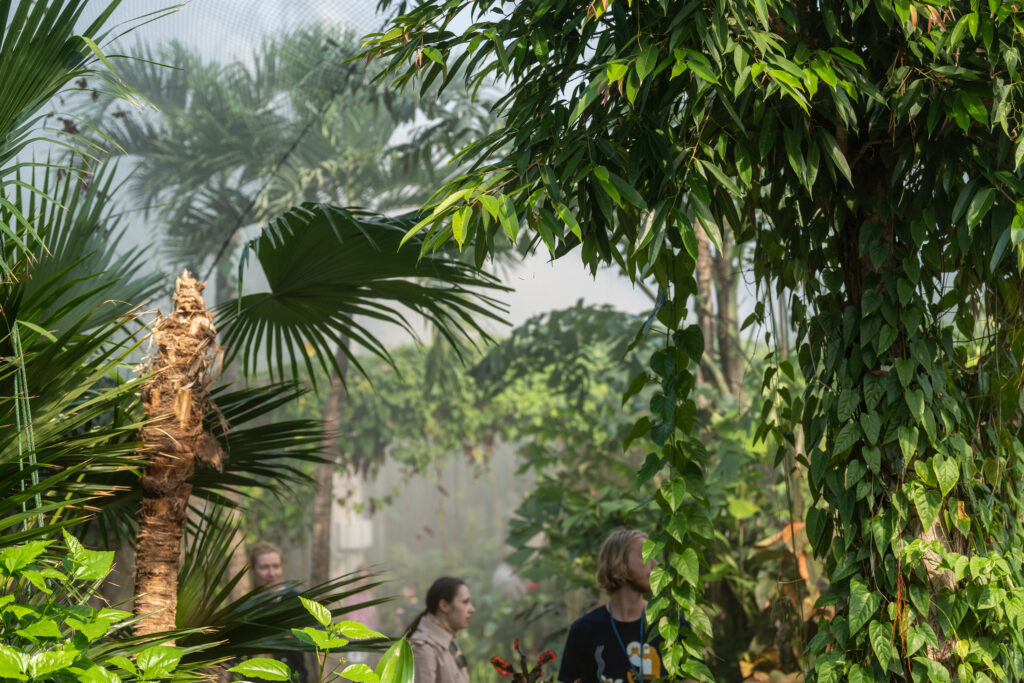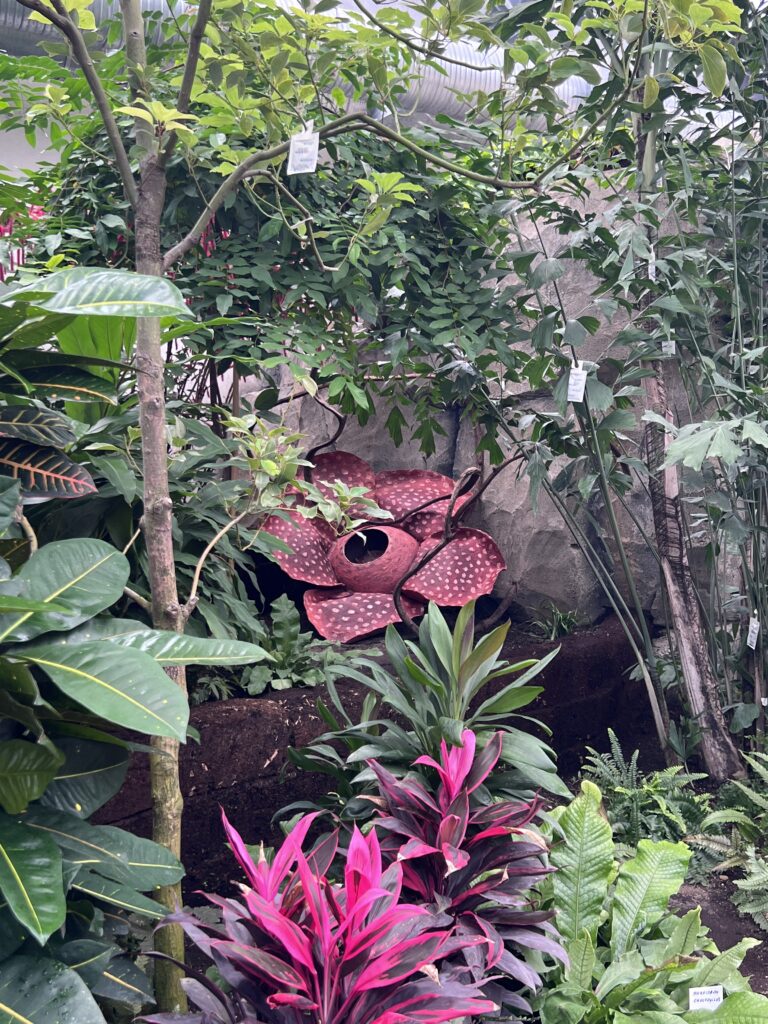Hannes Maripuu, head gardener at Tallinn Zoo, landscape architect Eneli Niinepuu and Jaan Mettik, head of the Tropical and Subtropical Plants Department at Tallinn Botanical Garden, summarise the work that has gone into the rainforest exhibit to make it exciting, beautiful, safe and durable.
Head Gardener Hannes Maripuu admits that establishing a rainforest on such a large scale in a temperate climate was a rather difficult undertaking, as there was no similar experience to date. “We do have a botanical garden in Tallinn – they have everything nicely zoned and the building is very well thought out and logical,” he explains, referring to the cooperation with the botanical garden.

A particular stumbling block was the COVID-19 pandemic – the original idea was that all the flora would come from South-East Asia. “Unfortunately, this plan went awry and we had to settle for the selection that was on offer in the Netherlands, otherwise it would have taken 18 months to transport the plants here.”
Plants had to undergo quarantine
After digging and transporting the plants, he explains, they still needed to acclimatize and quarantine, which was quite a long process. COVID-19 also delayed the construction process. A Latvian company, Hercs Flora, helped with the planting. “They did the job selflessly, even when the temperature in the building was 50 degrees Celsius last July. The planting was selected by landscape architect Eneli Niinepuu in collaboration with Jaan Mettik, a specialist at the Tallinn Botanical Garden.

Animal like to climb and interact with plants
Landscape architect Eneli Niinepuu admits she has no real experience of rainforests. “I got a lot of encouragement from the fact that my first education was in environmental management, during which I learned a lot about the ecology of different climatic zones, and I also had the support of a specialist in the form of Jaan Mettik.”

Jaan Mettik, who has worked in the Tallinn Botanical Garden for 24 years, says that although he has yet to visit a rainforest in Southeast Asia, he knows that the logic of building a rainforest is essentially the same. As the botanical gardens have also built greenhouses in the same style before, he felt more confident about the zoo. “We avoided the ruts that we had stepped on before, which gave us the courage to experiment. I felt like I had something to contribute and it was very interesting to do this work,” he says.

She adds that the needs of the animals, the artificial climate and the fact that the space, which is small enough to exhibit a rainforest, should gradually open up to visitors and create a sense of being in a mysterious jungle. We also have a fake plant, the Rafflesia arnoldii, the corpse flower or giant padma. We could not have this plant in our exhibition as the smell of it is too strong.

She agrees that the animals are at the forefront of the zoo’s rainforest exhibit, so their needs and habits need to be taken into account. “That’s why we couldn’t choose very pretentious plants.
The gardener says there are about 200 plants in the rainforest exhibit. “People are particularly impressed by the mist that is constantly spreading. The humidity is around 80 percent, which means you’re almost in a steam bath.” he shares. “It’s an experience of a lifetime, there’s no other option like it in Estonia or the neighboring countries.”




